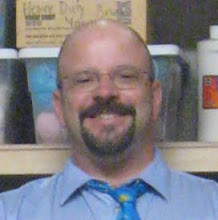Andrew Wales
Lesson Plans
Week 2: September 10-12, 15-17.
Kindergarten. Draw a fish. Paint with watercolor. Use basic shapes and terminology for direction and quality of line: straight, curved, wavy, etc.
PA Standard 9.1.3.A. Know and use the elements and principles of each art form to create works in the arts and humanities.
9.1.3.H. Handle materials, equipment and tools safely at work and performance spaces.
Identify issues of cleanliness related to the arts.
First Grade. Introduce the five basic elements of contour shape. Practice making the basic shapes by drawing a picture of a clown. Brainstorm: what are funny things that clowns do. Make your clown doing something.
9.1.3.E. Demonstrate the ability to define objects, express emotions, illustrate an action or relate an experience through creation of works in the arts.
Second Grade. Planetary Paintings. Students will experiment with watercolor techniques by making a painting of planets in outer space. They will try the techniques: wet on wet, salt, drybrush,
9.1.3.J. Know and use traditional and contemporary technologies for producing, performing and exhibiting works in the arts or the works of others.
Third Grade. Make a Poster: “It’s All about Me!” Students will add creative details to a poster begun last week.
9.1.3.H. Identify methods for storing materials in the arts.
9.1.3.E. Demonstrate the ability to define objects, express emotions, illustrate an action or relate an experience through creation of works in the arts
Fourth Grade. Political cartoons, Week 2. What are facts and opinions? How is art used in the presidential campaign? How do artists use symbols to express their opinions? Students will continue to use the symbols of donkey, elephant and Uncle Sam to express their opinion about the upcoming election. Color with markers or crayons.
9.1.5.A. Identify critical processes in the examination of works in the arts and humanities:
Fifth Grade. Acrylic Painting. Students are beginning a unit on acrylic painting. They will view a Powerpoint slide show on the artist Stuart Davis. In their sketchbooks they will make an abstract design that will be the plan for their painting: 1. Draw a large organic shape. 2. Draw a large geometric shape. 3. Put two small organic shapes within the geometric and two small geometric shapes within the organic.
9.4.5.C. Know and use fundamental vocabulary within each of the arts forms.
915F. Identify works of others through a performance or exhibition915G. Identify the function and benefits of rehearsal and practice sessions.























































